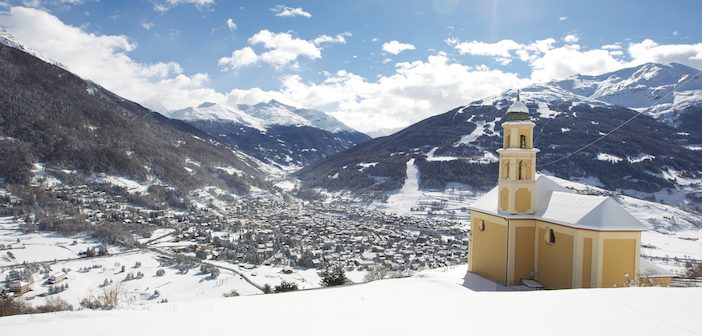Sarah Tucker discovers a town in the Italian alps known for its wine, food and skiing, and one that also happens to be the host of the next Winter Olympics…
The town of Bormio, perched on the edge of the Ortles-Cevedale mountain range on the edge of the Dolomites, has made environmental stewardship its number one priority as it prepares to host the 2026 Winter Olympics.
Having hosted the World Skiing Championships for years, as well as the England National Skiing Championships, for such a seemingly hard-to-reach, secluded spot, the town is well versed in handling an overload of visitors all wanting to reach the slopes as quickly and fuss-free as possible – and still maintain that dedication to sustainability. They know the treasure that is their landscape, and they want to look after it.
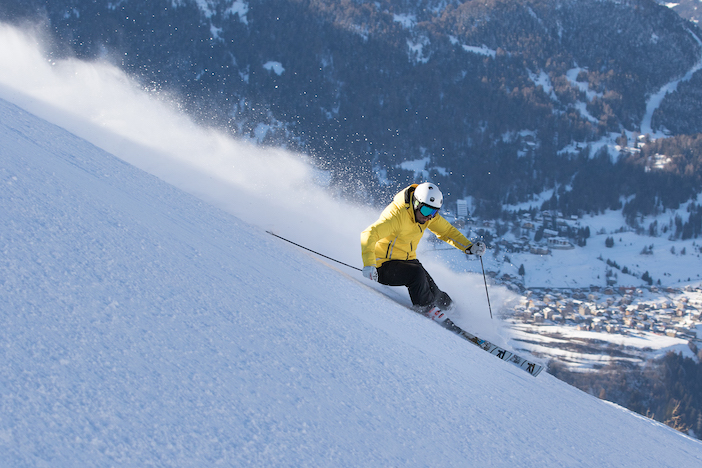
Even the buildings to host the guests are being designed with sustainability in mind. New buildings, like the Nzeb, are being redeveloped for the event, and has been designed to be a near-zero energy building. Heated by the latest renewable woodchip sources, with a state-of-the-art stormwater recovery system as well as underfloor heating and LED lighting, the Nzeb will host visitors and contestants when they arrive, and is designed to integrate into the stunning landscape.
Bormio is easy to reach by train from the UK, the journey made all the more enticing as it takes you through the most stunning areas of northern Italy and along Lake Como on the Milan–Tirano line. Most noticeably, a patchwork of what look like padi fields etched onto the southern slopes of the mountains are, in fact, vineyards growing some of the world’s finest wines. Vineyards such as the Nino Negri winery, where excellent and informative cellar tours provide facts on how the size and shape of the casks, and the type and age of the wood, impacts the flavour of the wine, and even the intriguing (and sustainable) science about how these casks are cleaned and maintained, by hand. Over sixty vineyards, all owned by locals, make up the wine producing area here, many with a long, rich history. The Valtellina vineyard, for example, is a UNESCO Heritage Site.
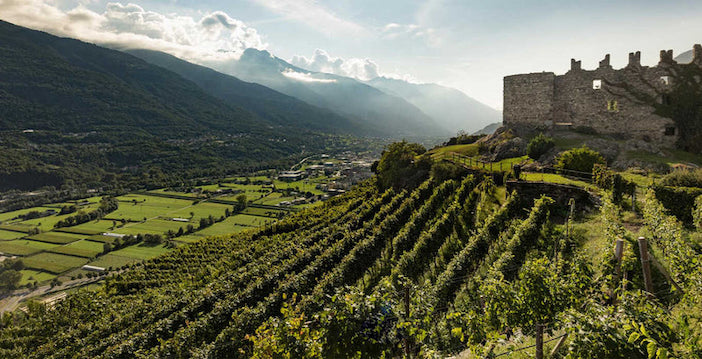
My journey began by Eurostar from London to Paris, followed by a transfer to the high-speed TGV Lyria bound for Milan. Once in Milan’s bustling Milano Centrale railway station, which seems packed irrespective of the time of day or year, it’s an easy connection to the regional Milan-Tirano line. Then, heading for Tirano, a local bus wends its way round the mountain roads to Bormio, taking in those breathtaking views of the mountain and lake landscape, dotted with medieval churches and castles, including those in Bellinzona, and yet more UNESCO sites.
The most famous of these is the Castlegrande, dating from the 13th century and affording the best views of the vineyards and its neighbouring castles nestled into the surrounding hills. Castlegrande, as well as Montebello and Sasso Corbano, all form part of the UNESCO canon here. In a region brimming with culture and natural beauty, it is easy to become absorbed by the medieval, but it’s worth making time for other stops, such as the phenomenal Acquafraggia waterfalls in Piuro, admired by no less than Leonardo da Vinci, who mentioned them in his Codex Antlanticus. The road to Bormio, clearly, is designed to side-track you that you to such an extent you might never reach your destination.
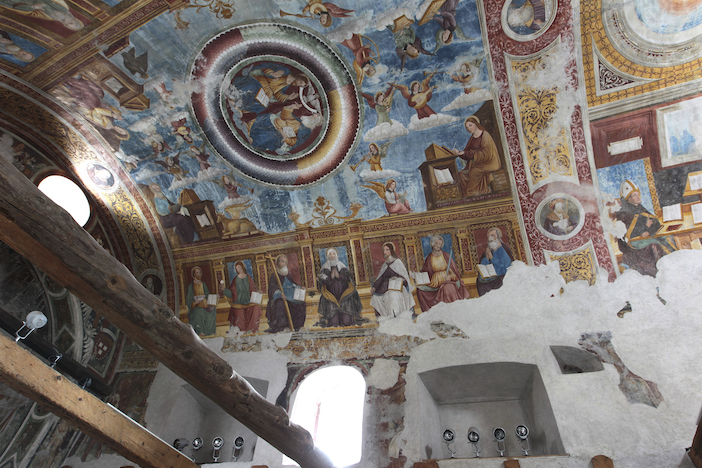
Architecturally, Bormio is as striking up close as it is from a distance, with its narrow-cobbled streets, medieval archways and tall needle-like church spires etching the skies. The history of the town dates to Roman times, much of which you can see not only in the town, in the ornate mosaics hidden away in churches, the corridors and ceilings of the town hall, as well as many of the arch and doorways, but in the thermal spas overlooking the town. This area has more thermal springs than anywhere else in the Alps, discovered by the Romans and in use to this day, even heating the Bormio Terme facility and providing domestic hot showers.
Obviously, one of the town’s standout features is its 110 kilometres of ski slopes (six of the best downhills in the world are featured here, I’m told), but there are plenty of activities for non-skiers, too, most notably hiking, gifted as it is by the presence of the Stelvio National Park. One of the largest national parks in Europe, the Stelvio spans over 1300 square kilometres, extending from the Ortler Cevedale Mountains in South Tyrol to the Italian speaking provinces of Trentino and Lombardy. I was taken on a snowshoe tour by local mountain-guide, Luca, who has lived in the area all his life, despite his work taking him around the world. Wolves and bears have reappeared in the area thanks to the passionate efforts of the park’s conservation programme, and we spotted wolf prints, even some blood in the snow at one point – which Luca assured me was not from a passing English tourist.
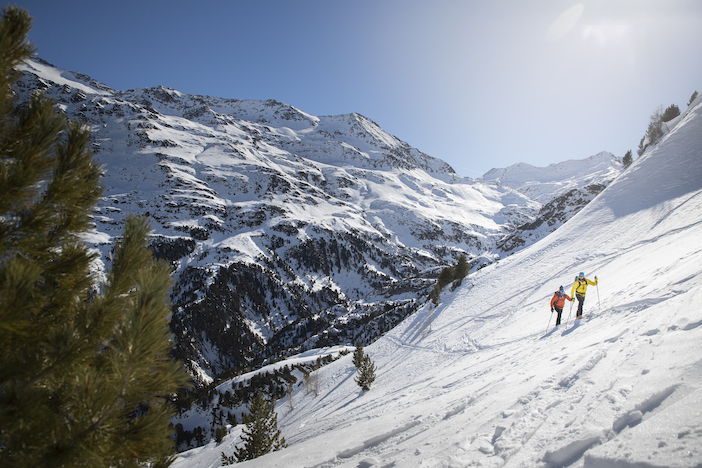
My stay was punctuated by the welcoming and cosy Agriturismo San Gallo, which offers incredible views over the valley, and a healthy dose of eccentricity. Embracing the farm-to-table ethos, establishments like Agriturismo San Gallo exemplify Bormio’s commitment to sustainability, prioritising locally-sourced ingredients, so everything you find on your breakfast table, from the eggs, milk, sausage and the like, was sauced locally. Their dedication to authenticity extends to the presence of their own livestock (cows, two donkeys and a goat at the last count) which, if you draw a curtain back in their restaurant, you can view the animals behind a large window as they graze in an adjacent stable. Clearly, in Bormio, they take locally-sourced to a whole new level.
The town’s restaurants are renowned for their food but even the restaurants here underscore the sustainability ethos, with restaurants like Ginger Bistrot and Ristorante Al Filo, showcasing the region’s culinary heritage through seasonal delights. All restaurants in the area offer local, seasonal food and, while I was there, in February, it was pumpkin and artichoke that were always on the menu.
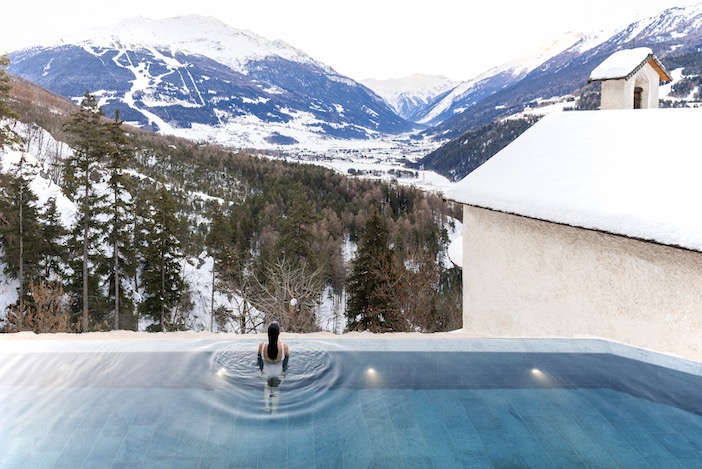
With such an abundance of fare in Bormio, it is tempting to rush from place to place, sampling all it has to offer. Never more so than in the spas, and those enticing thermal waters. The grand Bagni Nuovi, which resembles the imposing grandeur of the Grand Budapest Hotel, has a myriad of rooms designed to tease the senses, but it’s the pools set out in forests that are most inviting, or the infinity pools which stretch out over the valley, with the glittering lights and spires of Bormio in view, as day turns to dusk.
For an earthier bathe, as it were, there’s Bagni Vecchi, with its caves dating from Roman times and baths set in a chapel overhanging the cliff edge, and even a journey along a ‘wellness paths’ strolling from aromatic saunas and revitalizing mud baths. That temptation to do it all is all-pervasive but, on advice, it’s better just to find your metier and rest awhile – a forest infinite pool, in my case – and savour the art of ‘dolce far niente,’ or, as the locals call it, the sweet joy of doing nothing.
Photos by Roby Trab

